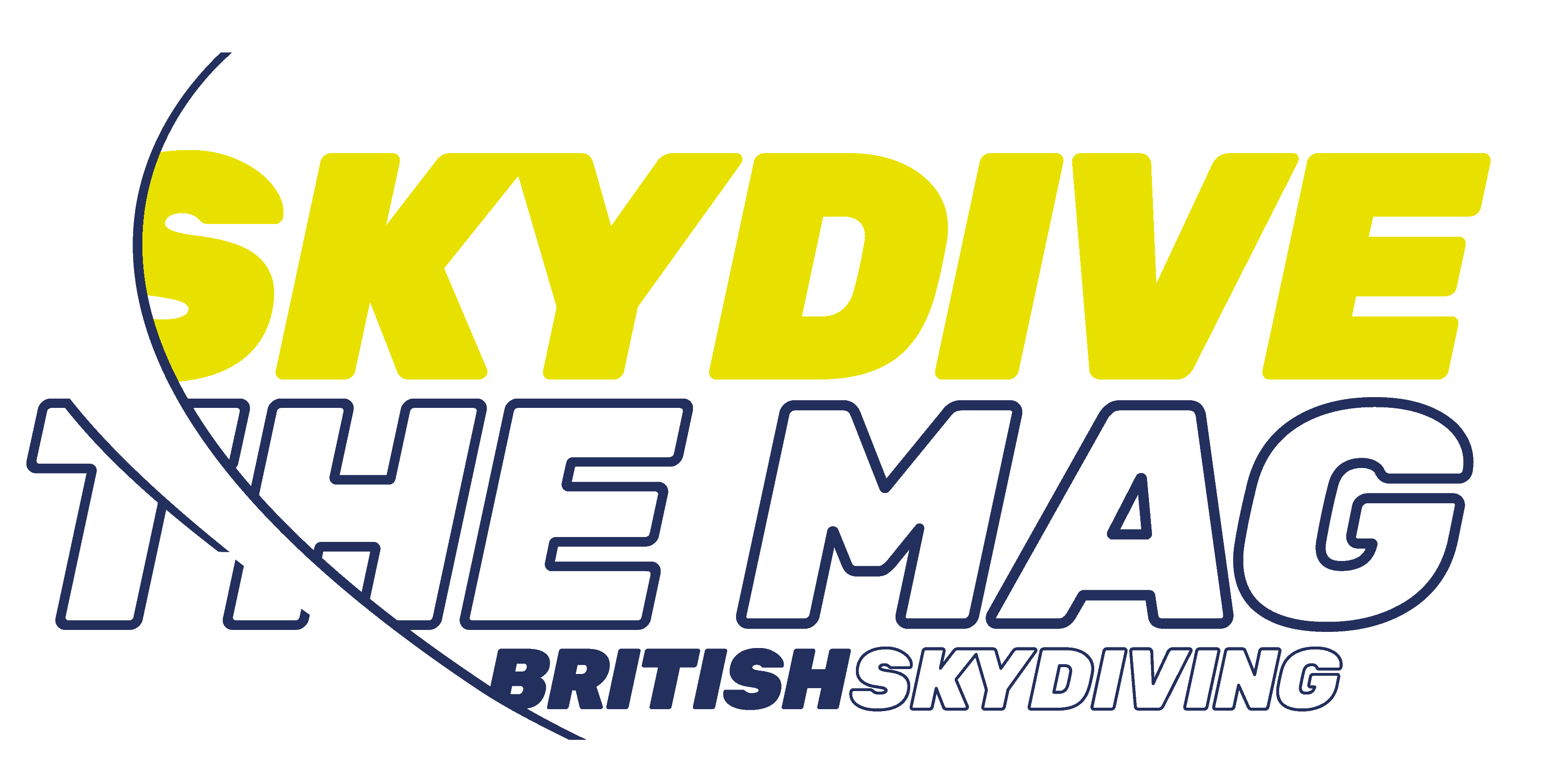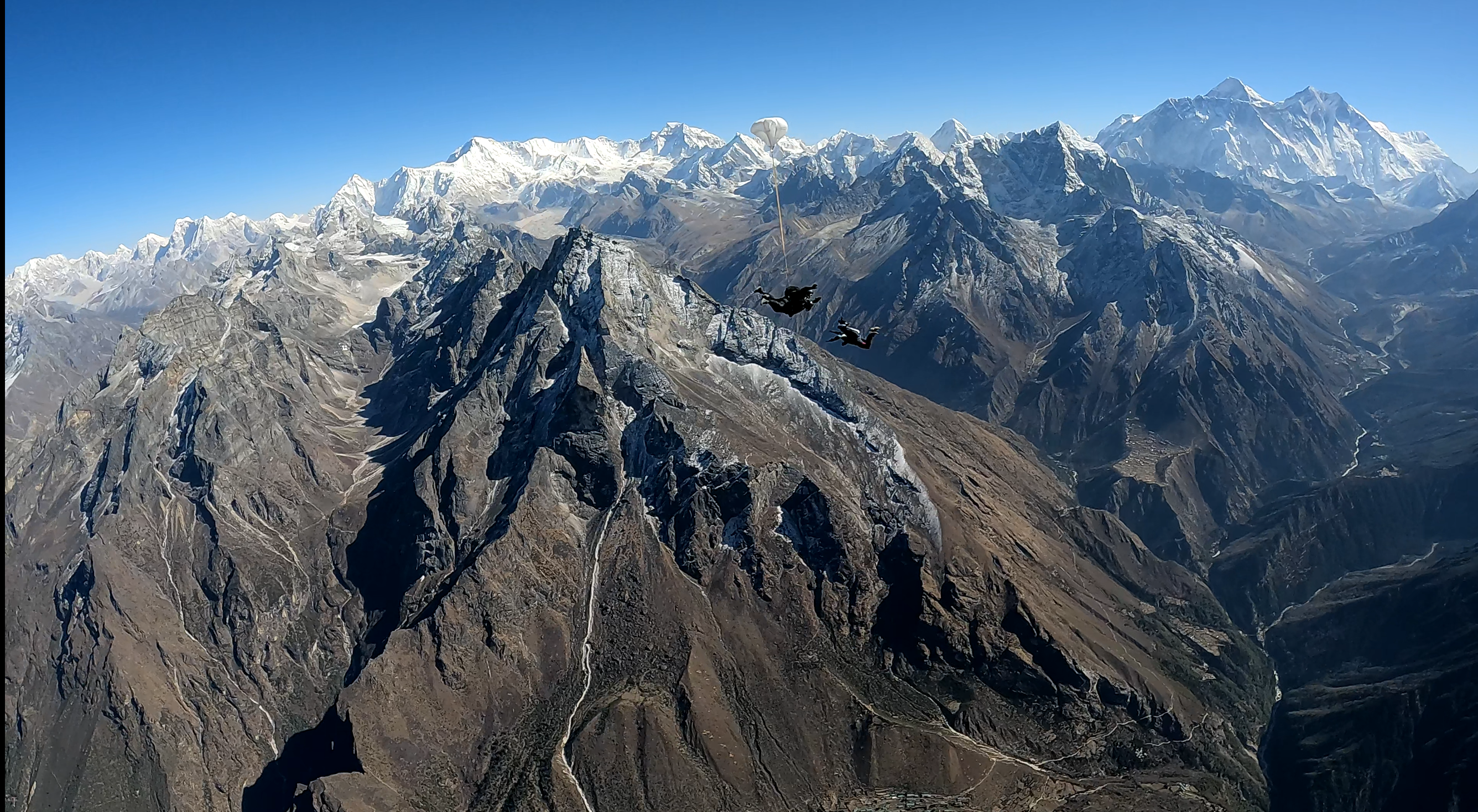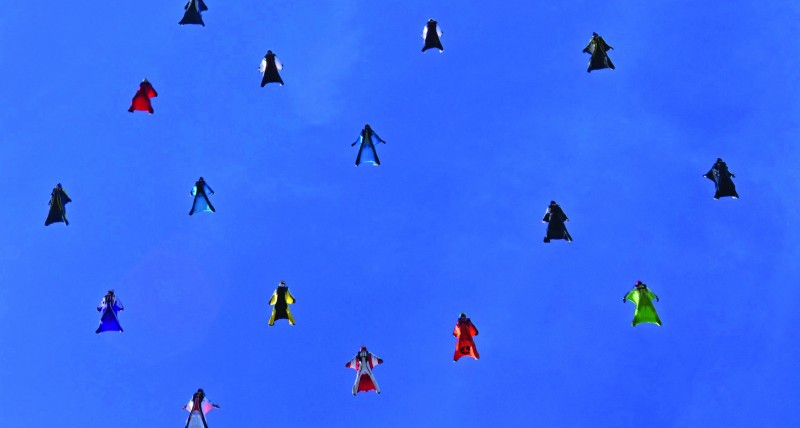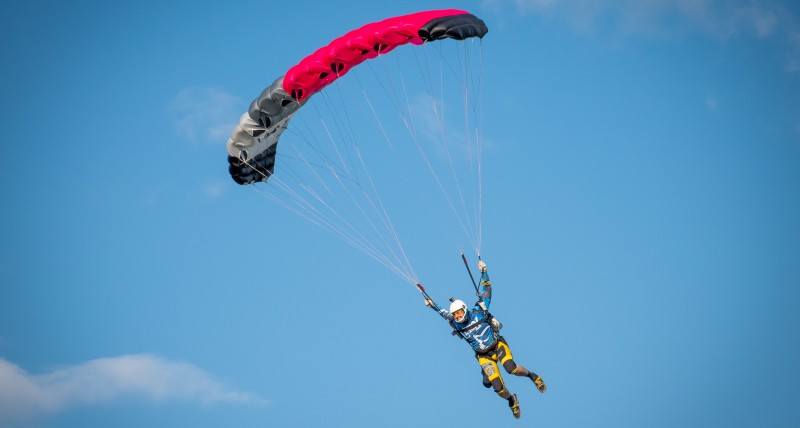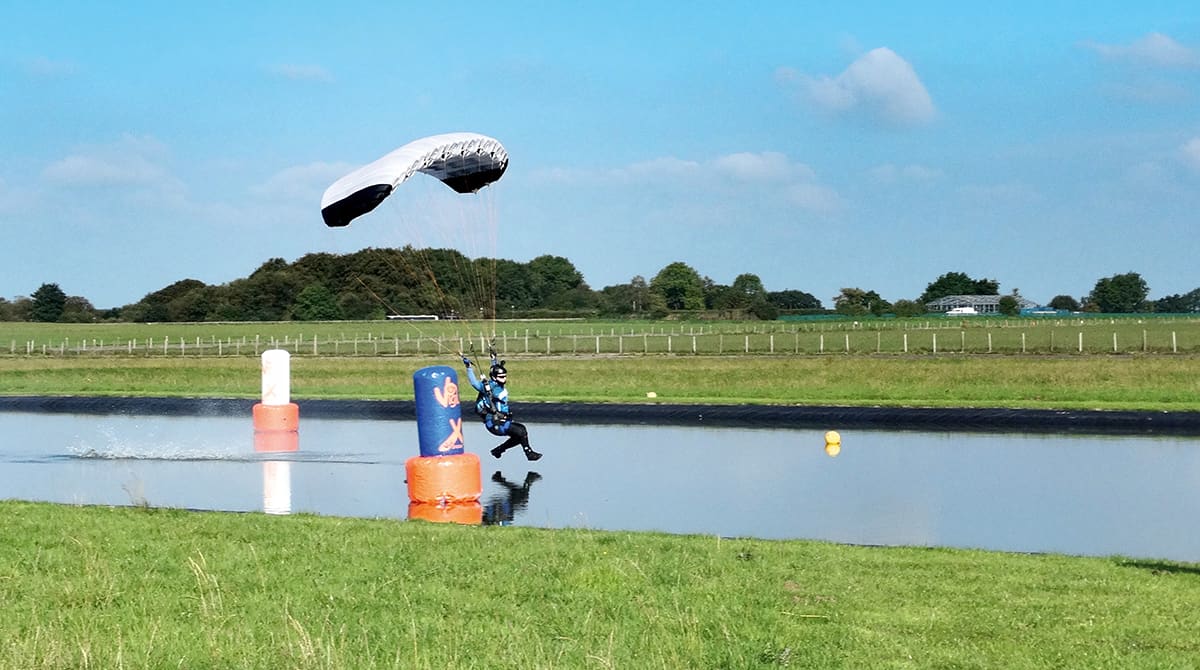History was made in April 2022, as Parabellum Tactical Training Ltd successfully completed a challenging endeavour which is believed to be a world first. Parabellum are British Skydiving members Lee and Olga Winter, who were approached by the Pilgrim Bandits charity to organise, coordinate and manage a unique experience. The Pilgrim Bandits were organising a ten-person, 12-day trek in the Himalayas for injured veterans, and wanted four of them to complete two tandem skydives each at Mount Everest. Although tandem skydiving has successfully taken place at Everest before, the challenges presented by the veterans’ injuries are believed to make the expedition the first of its kind.
Who’s who?
Martyn Compton (ex Household Cavalry) received 75% burns during an Improvised Explosive Device (IED) attack in Afghanistan during 2006. His tank was blown in half and the rest of his crew were killed. The tank then came under fire from Rocket Propelled Grenades (RPG), which engulfed the remains of the tank and Martyn in flames. He managed to pull himself out of the driver’s seat to get to cover, but was subsequently shot twice in the leg. Martyn remembers little of the rescue, waking up four months later in the UK.
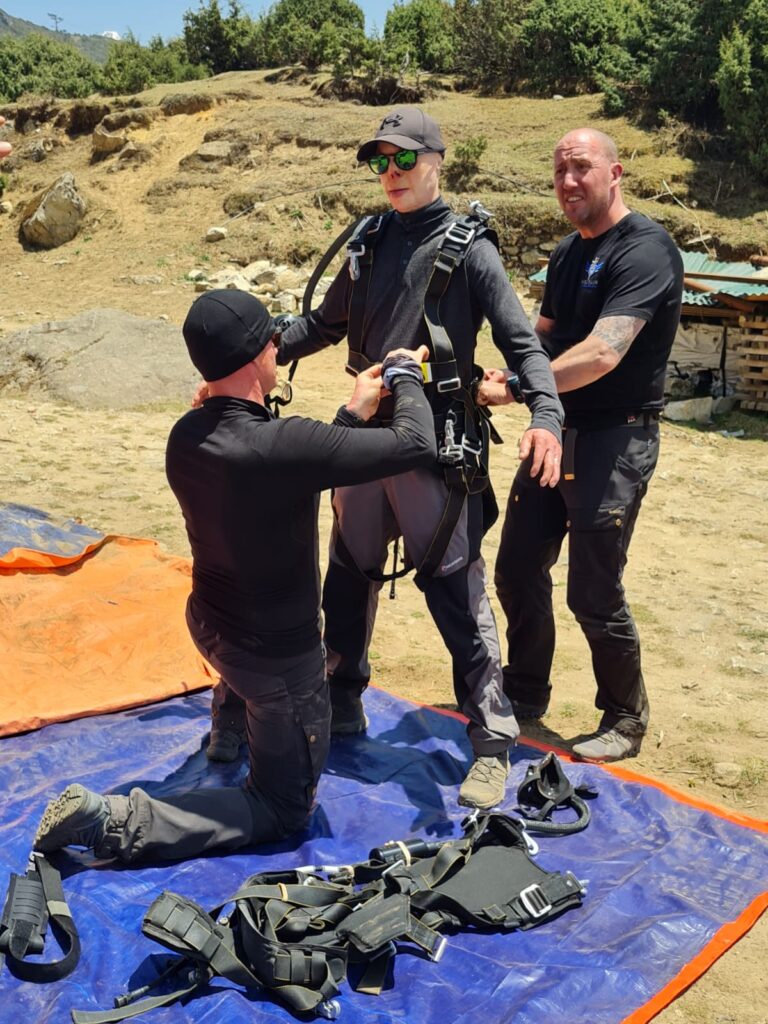
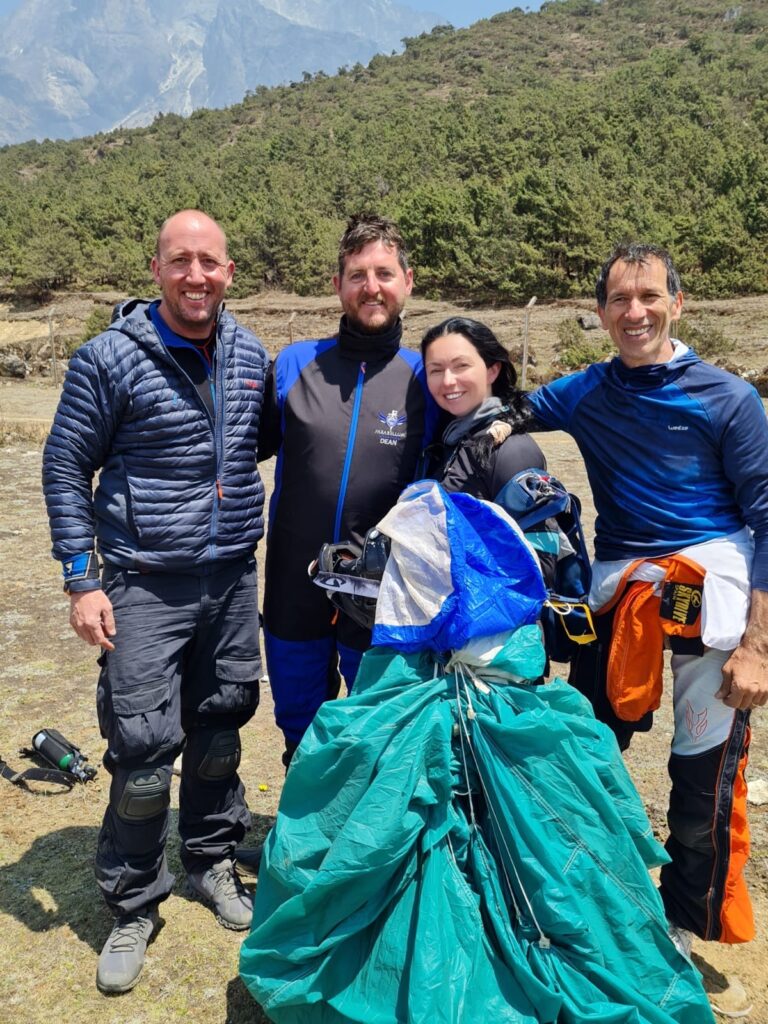
Dean Bousfield (centre left) joined the British Army in 2004 and served for nearly 10 years before he was badly injured in Afghanistan. He was shot in the head by a sniper and was incredibly lucky to survive. The bullet passed through his brain, exiting above his right ear; he is the only known survivor of a gunshot of this kind. Dean was flown back to the UK after receiving emergency surgery at Camp Bastion, where he remained in a coma for the next six weeks and has no memory of this time. In 2015 he made the difficult decision to have his left arm amputated due to the paralysis from his brain injury.
John Chart was a firefighter for 26 years and was a former world champion power lifter. He was diagnosed with Motor Neurone Disease (MND) in 2019. As this demonic disease progressed, he has lost the use of his arms. John does not let this hold him back. He continues to challenge himself, both mentally and physically, with the support of his family and the people close to him. John is a fantastic role model not just for his children but for all of us, who demonstrates what it means to ‘live’ life. This would be the first skydive of this type from someone with MND. If anyone can prove the impossible can be achieved, it’s John.
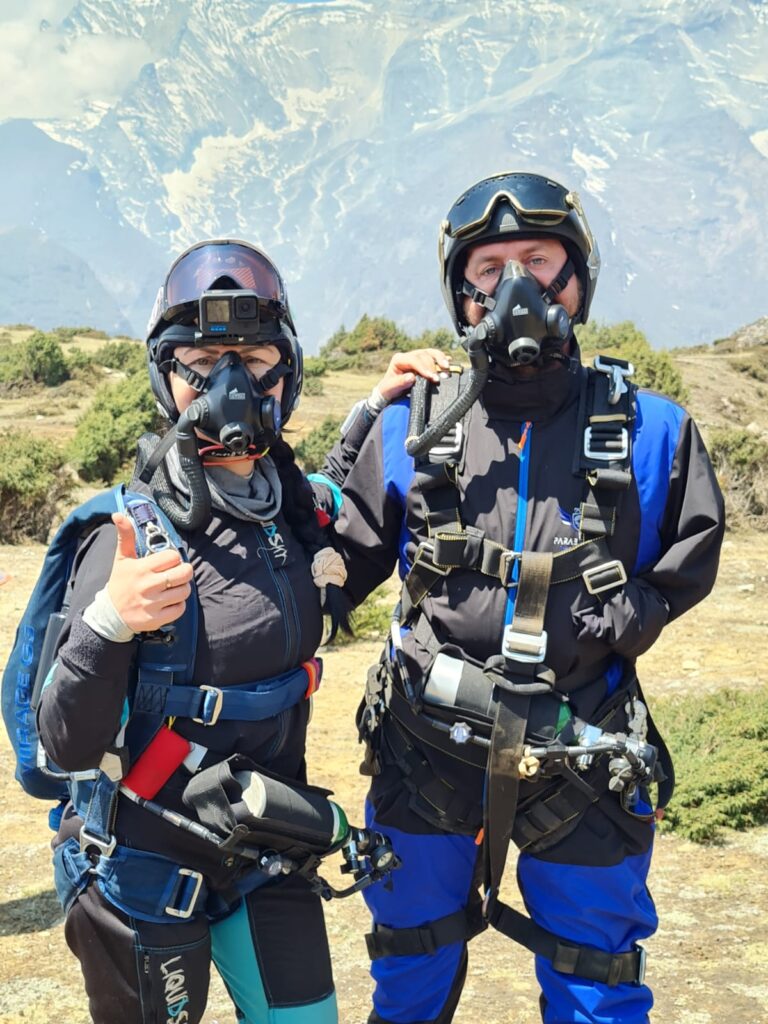
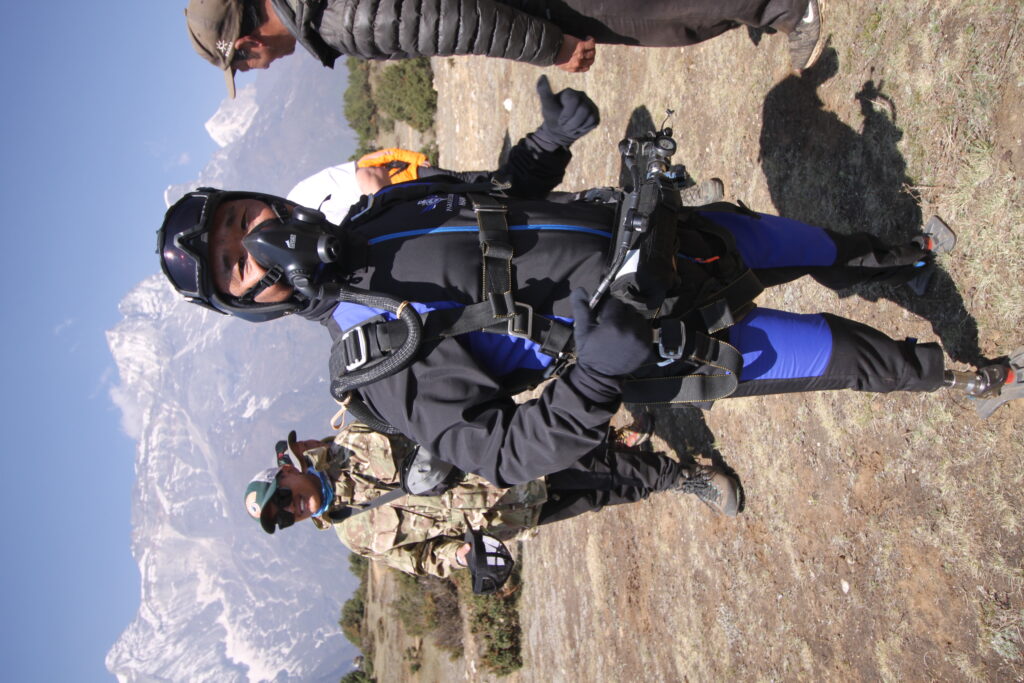
Hari Budha Magar started his career in the British Gurkhas in 1999 and gave the prime of his life to the job. He was deployed in a number of locations and was at the peak of his career when his life changed in 2010 after stepping on an improvised explosive device (IED). Hari believed his life was over and he would die but was airlifted to a nearby base. He survived but, to his horror, he lost both his legs and had scars all over his body. Hari went through hell but he came out of it stronger than ever. This year, before completing the skydives over Everest, Hari became the first above-knee double amputee to reach Everest Base Camp. Hari is simply an inspiration.
Martyn, Dean, John and Hari would be completing two tandem skydives each with British Skydiving Instructors Lee Winter and Niel Flanagan. The cameraflyers would be Olga Winter and Krasimir Ilev, who would also jumpmaster the loads.
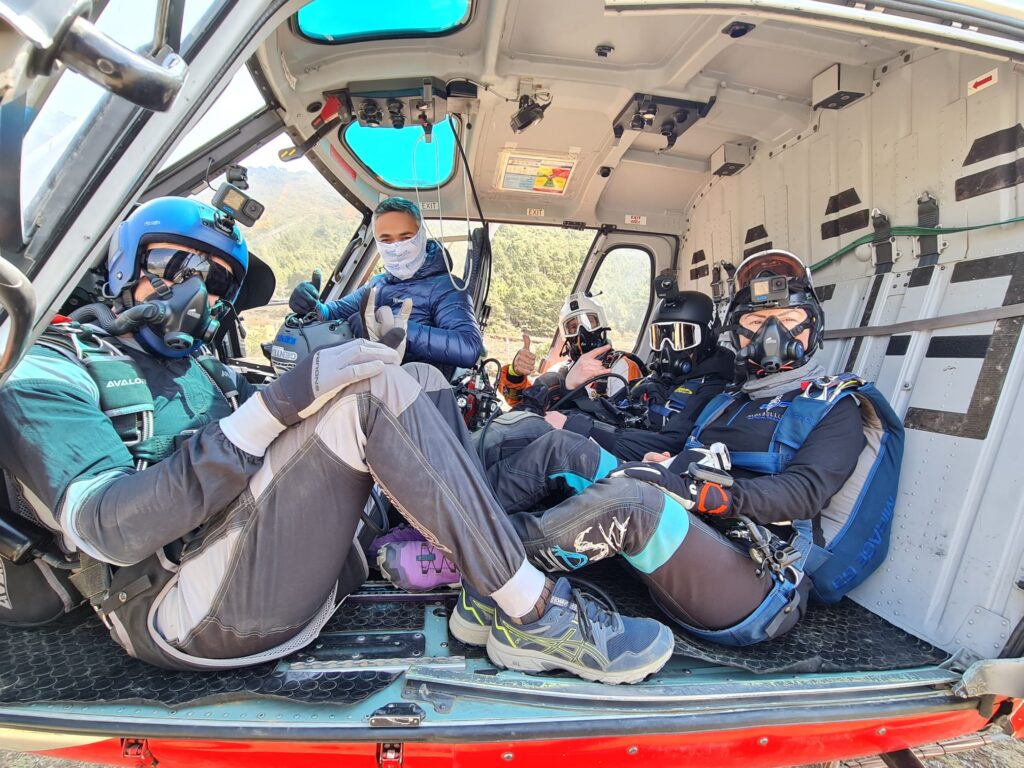
UK prep
Exit altitude in the Himalayas would be between 23,000ft and 24,000ft above sea level, with the DZ landing elevation at 12,402ft. Mount Everest stands at just over 29,000ft, providing a stunning backdrop. The aircraft was to be an AS 350B3e Airbus mountain helicopter, which seats four people. Each load would normally have three jumpers on board – the Tandem Instructor, their veteran student and the cameraflyer.
An initial assessment of the disabilities of each tandem student was vital in order to identify their specific requirements. Dean required significant due care and consideration owing to the unknown effect that a lack of oxygen and extreme pressure changes in a high altitude environment would have on his brain injury. Work began to mitigate the risk, with Dean and the team travelling to Cardiff University for an introduction to the lower oxygen levels that are experienced at 23,000ft AMSL. This included conducting a safe incremental over test to increase the altitude up to 26,000ft AMSL, the height of the South Col of Mount Everest.
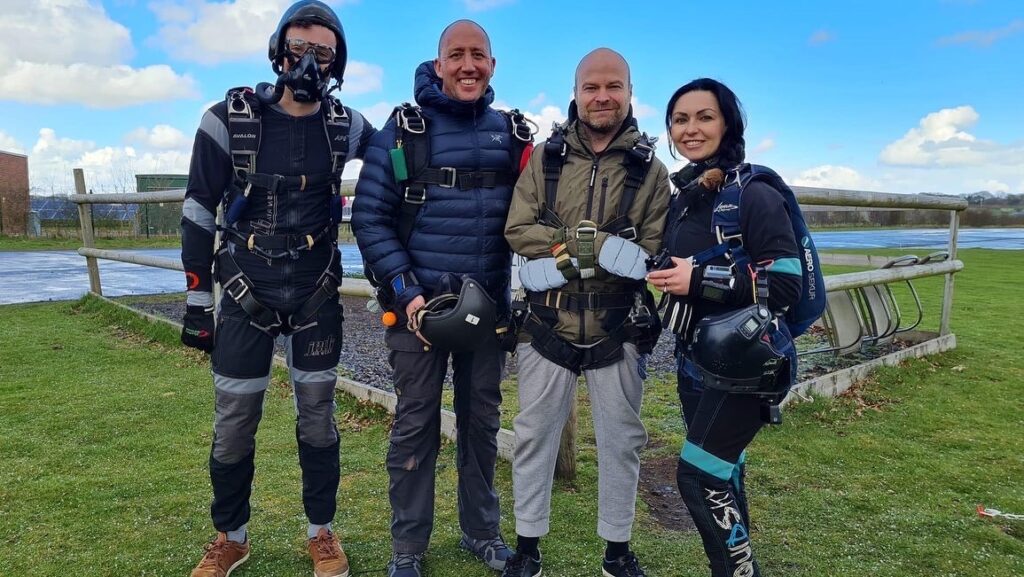
Once assured that the jumpers and the whole team could operate and deal with supplementary life support oxygen emergencies, next began the development of the procedures required to operate and conduct freefall descents at the highest dropzone in the world. There were a large number of technical challenges to overcome, many of which were further complicated by the veterans’ injuries.
British Skydiving’s Safety and Training Committee gave approval for practice jumps to take place at Skydive Tilstock here in the UK, with the tandem students wearing all the oxygen equipment including goggles and mask. Tandem students are not normally allowed to wear such extra ancillary equipment, but permission was given so that they could experience some of the challenges involved. It made sense to rehearse over the relative safety of Shropshire before heading to the Himalayas! The veterans got to experience what it was like to have a 20 minute climb in a similar sized airframe, wearing claustrophobic equipment that they would not be able to take off. The kit also made it harder to communicate – we usually have to shout in aircraft anyway, but now add a well-fitting mask into the equation! Hand signals were therefore developed in order to communicate and to verify that the veterans were OK, but then one student has lost the use of his arms and another has had an arm amputated! – so there was a lot of adapting for disabilities. To avoid injury at the landing phase, the most critical point of the tandem skydive, additional harnessing was manufactured to aid the veterans to lift their legs for landing.
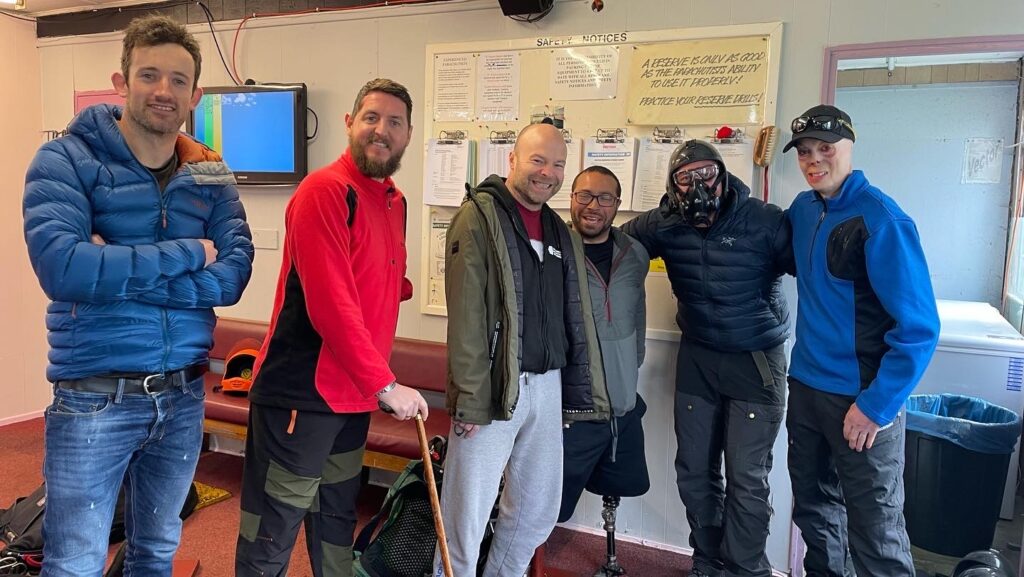
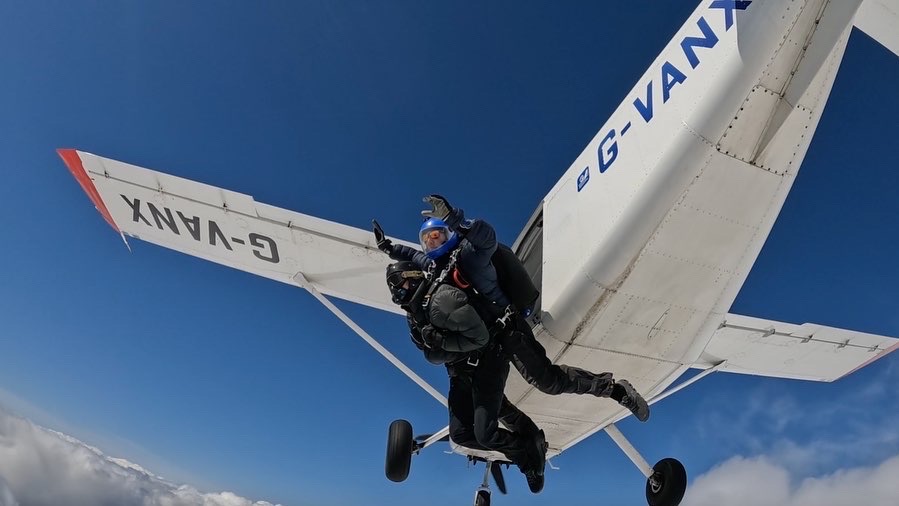
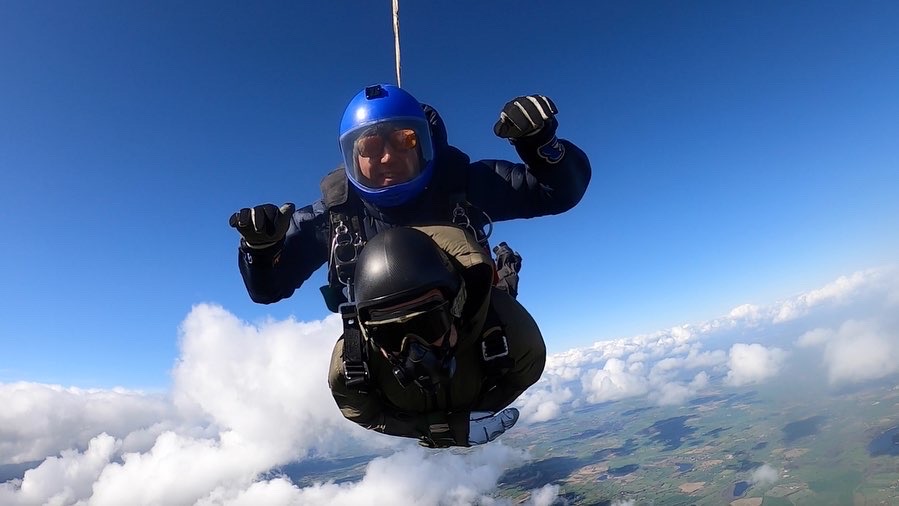
Nepal prep
With all rehearsals complete, the team were confident that as much risk as possible had been considered and mitigated before travelling to the Himalayas. Parabellum staff conducted several in-depth recces of the landing zone and weather conditions in the days leading up to the event, in order to confirm the planned aircraft exit point. This was critical due to the austere location of Syangbouche Airfield and the ever-changing conditions. Syangbouche sits on a shelf surrounded by sheer cliff faces and mountains. This would provide an awesome backdrop whilst under canopy but would also require an extremely high level of skill from the Parabellum staff to land safely. Icarus World provided two TX2 sponsored tandem canopies, with steep trim for better landings, but the landing challenges were still significant. The landing area is basically a rocky shelf meaning lots of curlover; conditions were typically either nil winds or turbulence and the three wind blades would often be pointing in three different directions.
The challenging terrain also includes a nearby ridgeline that is 1,000ft above the elevation of the landing area. This required Cypres AADs to be offset, as it was possible to be in freefall over it. In fact, within a few hundred feet of airspace it is possible to be either 1,000ft above the ground or 10,000ft above the ground, so it was absolutely vital to get the spot and winds correct. This was the cameraflyer’s responsibility and required positive decision making to get it right, as there are no ‘outs’ to this landing area.
As well as faster landings, the thinner air means faster freefall. The parachute also takes longer to open in the thinner air, so pull height had to be increased accordingly. Where else in the world can you exit above 23k and still only get 20-25 seconds in freefall?!
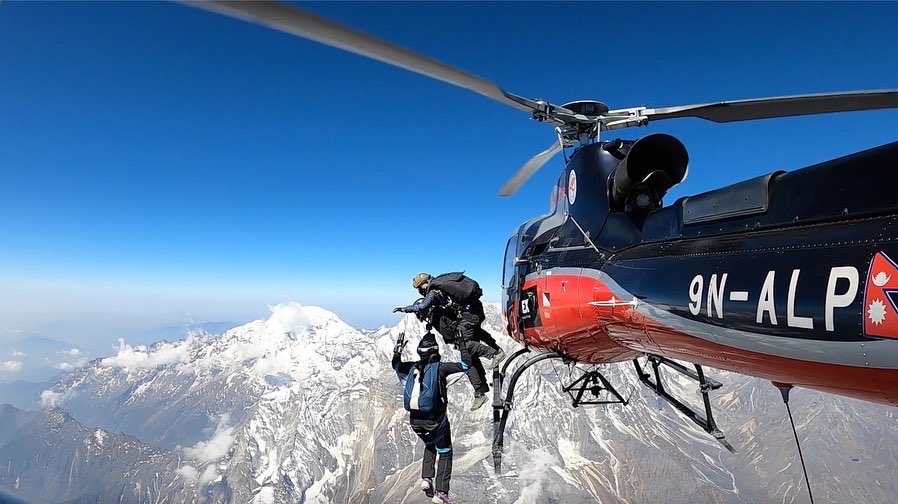
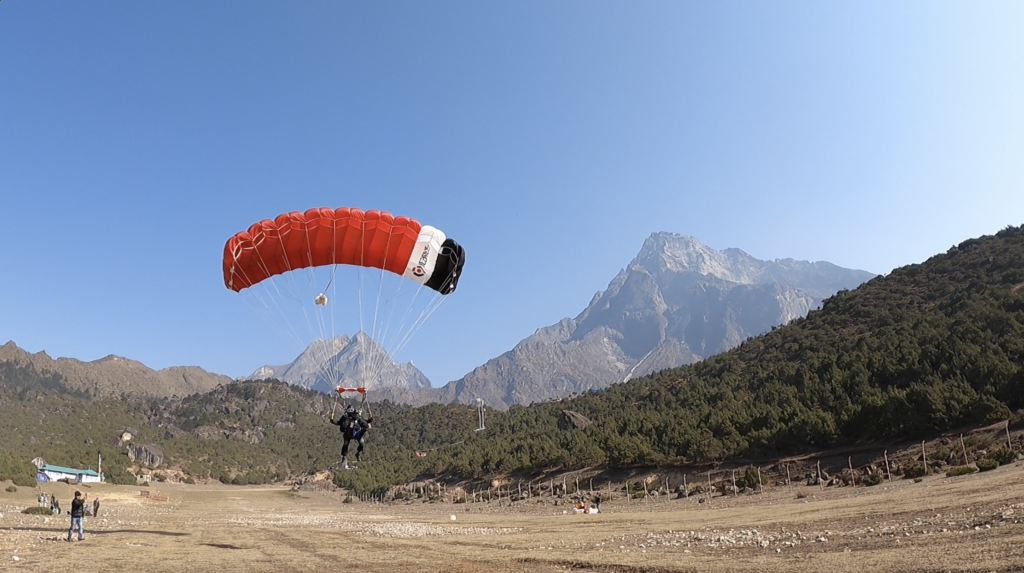
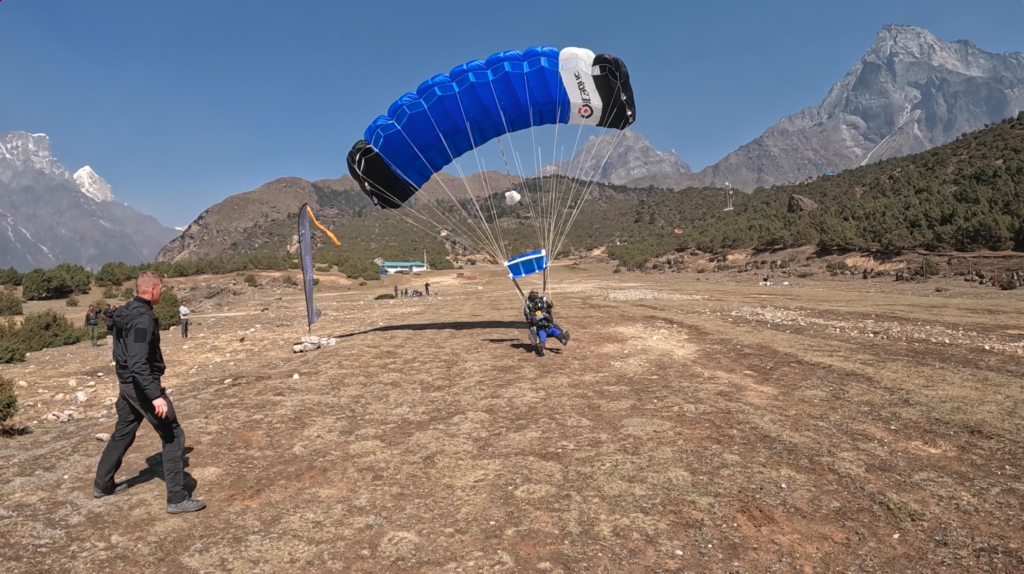
Never give up
Once the team arrived at Namche Bazaar they completed their final ground rehearsals and preparation for each jumper, and were now ready to jump. An early morning blessing from the local Lama whilst the sun was rising provided a surreal moment for the team; all of the training and preparation was about to be put into action. The conditions were perfect, the helicopter had arrived and the first veteran, Martyn, was sat onboard strapped to his Parabellum Instructor. Within 15 minutes of taking off the history books were about to be re-written, and all four severely disabled veterans conducted their first tandem skydive on the first day. The sense of achievement was huge; these four disabled individuals had stared adversity in the face from the top of the world at Mount Everest to throw themselves out of a helicopter. They had shown they can live a limitless life without boundaries, despite their disabilities.
A second jump the next day was completed, not only to add to the experience but to stand by the motto of the trip: ’never give up’. The expedition was a success on so many levels. For these individuals it meant the world; for the whole team it meant the world; and there was, therefore, no better place for dreams to be made than on top of the world in the Himalayas. They have all clearly shown that no matter what your disability, you still have the ability to accomplish whatever you set your mind to.
Parabellum are the first company to deal with such a challenge, but none of this would have been possible without the incredible support from Tsum Valley Trek and Expedition Pvt., who supported logistically in Nepal: from moving complex sensitive equipment and life support system from Kathmandu to Syangbouche, to ensuring that all of the injured members of Pilgrim Bandits group were supported and assisted as necessary to reach Namche Bazaar and Syangbouche airport safely.
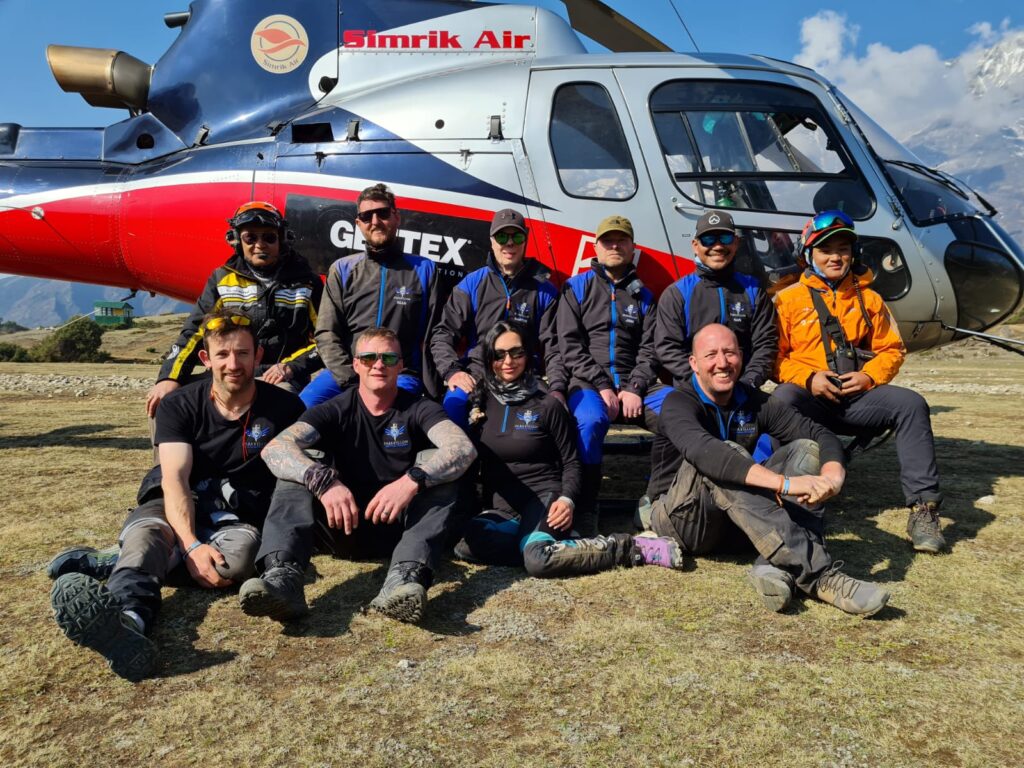
Parabellum Tactical Training Ltd are running their next Everest trip from April 21 to May 2 2023. You can jump with them, at the same DZ but also at a new one – Ama Dablam near Namche Bazaar. Ama Dablam is at 15,100ft elevation, which would be a new world record highest landing.
The full video of the expedition is below.
